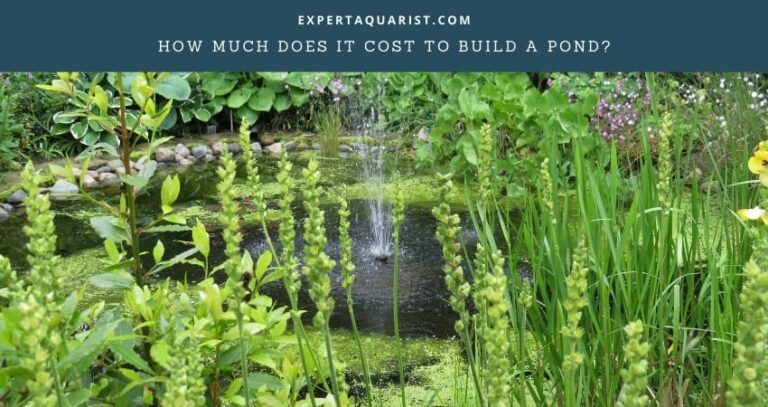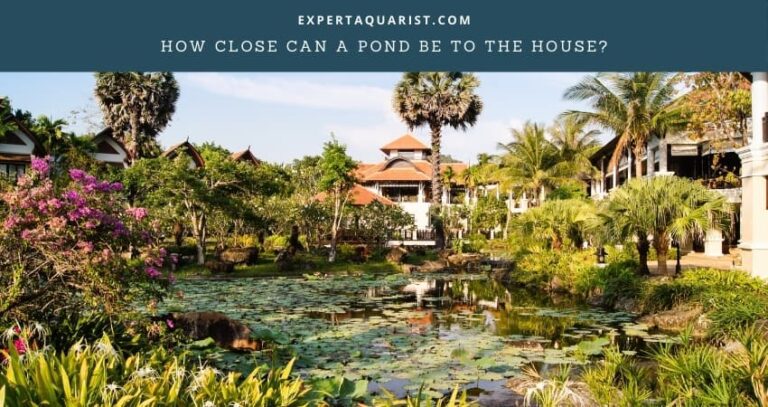Fish pond keepers know that there’s nothing as frustrating and irritating as watching the slimy green algae take over and completely cover your beautiful pond. Looking at it, you would think that removing it completely without causing harm to your fish is quite impossible.
Well, it’s not.
With us is a list of some of the methods that you can use to control and get rid of pond algae. Two things that you should keep in mind, however, is that not algae are harmful and that you will not be able to get rid of all the algae.

How To Get Rid Of Pond Algae
With our tips and methods, you will no longer have to worry about your algae problems. Let’s talk about the methods in details –
1. UV Pond Clarifiers
The first method is through the use of strong UV light. If you didn’t know, ultraviolet light is able to destroy and damage algae cells. The work of UV Pond Clarifiers is to expose these cells to strong UV Light, and letting nature do its work. Both the green and blue-green algae will be dealt with accordingly. There are several configurations in which UV Pond clarifiers are available in. Apart from being part of the pond filter, they can also be attached to your pond pump.
UV light is very strong and effective. With this, your filter will be clogged with dead algae cells very fast. Regular cleaning is thereby inevitable. A thumbs up with this process is that your fish are 100% safe. You are, therefore not required to remove them prior to the treatment process. UV light only kills the harmful bacteria as well as virus. After the treatment, your fish will once again be safe to swim and live in your pond.
During the summer period, you are recommended to leave the pond clarifier on all day long to minimize the algae levels as much as possible. What you’re getting with this method isn’t only the advantage of killing algae, but also your fish living long without the need of a pond clarifier.one thing to keep in mind is that this method is only effective against the green and blue-green algae and isn’t effective against string algae and large algae.
2. Pond Dyes
Pond Dyes are viewed as a contradiction to UV Pond clarifiers in that they block UV Light from reaching the algae. This might be confusing, right? Well, here is how it works. Algae uses UV light for their growth. Depriving them this light can only be translated to photosynthesis not occurring. Pond dyes are pretty much like sunglasses; protecting you from harmful ultraviolet rays.
Whereas pond dyes are safe to use with the fish inside, they will not kill large algae. Use of pond dyes is more suited as a secondary method of algae control, after using another method to kill your algae. It therefore restricts the small algae from growing and multiplying. After using the pond clarifier to eliminate as much algae as possible, you should turn to the pond dyes to keep control of the damage.
A good advantage of pond dyes is the work that they were originally created for; keeping your pond beautiful. They will do a good job at that. One thing that you should know with this method is that it reduces the process of photosynthesis on all underground plant life adversely. It is therefore advisable to use it when the plants are large enough to sustain themselves.
3. Chemical Algaecides
We have to warn you, use of chemical algaecides can be very risky to the health of your fish and other aquatic life. This is because not all chemicals are conducive with the fish. It is a method that should be used as a last resort, when the algae have outgrown and there is no better way of killing them. Fish are delicate creatures and a lot of factors can affect their wellbeing.
How do chemical algaecides work? Simple, they attack the cells and destroy their walls. They are effective at killing the algae and makes this method highly effective when it comes to eliminating algae. Even the large algae blooms will be destroyed in a matter of hours or days. The price of this, however, is that the environment in which your fish live in will change.
For one, the oxygen levels in the pond will greatly reduce. Oxygen levels depreciate with the dying of algae. The dead algae will sink to the bottom of the pond where decomposition will begin taking place. Decomposition also requires oxygen, and this will further reduce the oxygen levels. If there are two fish in your ponds, the situation will be fine for them. But if you own numerous fish, they will struggle to survive.
You can employ different methods of oxygenation. Fountains, pond pumps and other devices may be used to increase oxygen levels. Other plants in the pond will remain unaffected by the chemical algaecides unless you pour them directly to the plants. Chemicals are known to be harmful to fish, but funny enough, there are some that are friendly and come with health benefits to the fish.
4. The manual removal of algae
Last on our list is a natural and more friendly method with no side effects to either your fish or other aquatic plants. You can opt to remove algae manually by use of hands or other tools such as a rake. This method isn’t pleasant, obviously, but it is fast. Moreover, it is easy. If you opt to remove them using your hands, ensure that you have protective gloves on and don’t use your bare hands. This method allows you to grip the algae and makes it ideal and effective for the string type algae. When you have a large pond, where you can’t reach the middle, you could opt to use a rake.
5. Aquatic Plants
To keep algae at bay you can introduce aquatic plants in your pond. These aquatic plants have a number of benefits. They will also absorb the abandoned nutrition from pond water and as a result algae will starve to death.
Conclusion
The above methods are all effective and come with their pros and cons. There is no wrong choice to go with, it all depends with your needs and nature of your algae problem. You should weigh the advantages and disadvantages of method you wish to go with and decide whether it is effective. Moreover, you aren’t only limited to these methods. There are other numerous methods that you could use.






